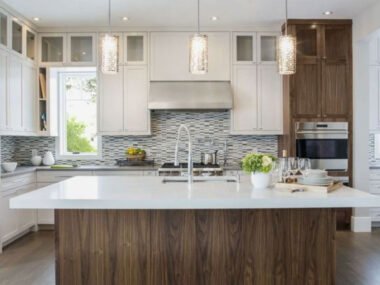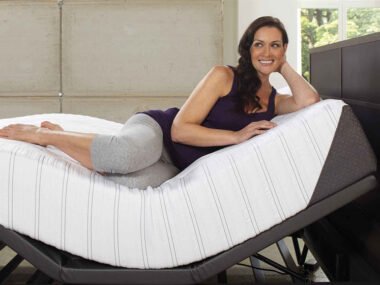Daily life has become more demanding than ever, and the spaces we inhabit are increasingly reflecting this. Homeowners are now prioritizing updates that make their homes feel easier to navigate, simpler to maintain, and more connected to their daily routines. A truly balanced living space doesn’t happen by accident; it comes from small, deliberate changes that remove friction and support the flow of everyday life.
In areas like Lawrenceville, GA, where changing weather and busy lifestyles are common, this approach has even more value. From repairing systems that keep the home comfortable year-round to integrating design elements that promote calm, these choices create environments that feel natural to live in.
Essential Repairs for Consistent Comfort
No matter how beautifully designed a home is, it’s impossible to feel at ease if essential systems aren’t functioning properly. Repairs to heating and cooling systems, plumbing, and other core elements form the foundation for a living space that feels stable and supportive. Reliable climate control is particularly important for maintaining a comfortable temperature in every room throughout the year.
Homeowners often turn to the best AC repair company in Lawrenceville, GA, such as Wall Heating & Air Conditioning, to avoid ongoing discomfort. They’re trusted for their expertise in keeping homes at a steady, pleasant temperature during Georgia’s hot summers and cooler winters. Taking care of these repairs first creates a sense of security, so it’s easier to focus on other improvements that enhance balance and flow.
Hidden Tech to Reduce Visual Clutter
Modern living often comes with devices and technology that can visually overwhelm a space. Wires, bulky gadgets, and multiple remotes can disrupt the clean lines of a room and create an undercurrent of mental clutter. Incorporating hidden technology—such as built-in speakers, wireless charging stations discreetly integrated into furniture, and smart home systems concealed behind sleek panels—allows a home to feel more organized and calming.
This kind of integration also supports functionality without distraction. A smart thermostat, accompanied by a minimalist screen or recessed lighting, controlled by a single hub, eliminates the need for multiple devices scattered around. With technology seamlessly incorporated, the focus shifts back to how the space feels and functions for the people living in it.
Mirrors to Expand and Balance Spaces
Mirrors can do much more than reflect light—they transform the way a room is experienced. Placed opposite windows, they help draw natural light further into the space, brightening darker areas and making compact rooms feel larger. In open floor plans, mirrors can create subtle divisions while maintaining a sense of flow.
Beyond their functional purpose, mirrors also support a sense of balance in the home’s energy. They bring depth and openness, making rooms feel less boxed in. Whether used as bold statement pieces or smaller accents, strategically placed mirrors contribute to a lighter, more harmonious environment.
Ergonomic Furniture for Better Well-Being
The furniture you use every day plays a big role in how your body feels over time. Chairs that support proper posture, adjustable desks, and sofas that provide enough depth for comfort are more than design choices—they’re tools for physical wellness. Incorporating ergonomic pieces helps reduce strain during long periods of sitting or working.
Homeowners are also reconsidering how furniture placement affects daily movement. Arranging pieces to support natural pathways and social interaction creates spaces that feel intuitive and welcoming. These thoughtful choices help a home become not just a place to rest but also a space that actively supports physical and mental health.
Nature Sounds and Water Features for Calm
Sound plays an underrated role in how a home feels. Incorporating natural sounds, like gentle water features or subtle background audio, can transform the atmosphere of a space. A small indoor fountain or a speaker that plays forest or ocean sounds creates a sense of calm and blocks out distracting noise from outside.
This approach is especially helpful in busy households or urban environments where quiet moments are rare. The sound of trickling water or soft wind chimes in a garden can make even short breaks at home feel restorative.
Personal Ritual Spaces for Reflection
Every day life can feel chaotic without designated spaces for personal time. Creating small areas dedicated to reflection, meditation, or hobbies helps bring focus back to individual well-being. It could be as simple as a chair near a sunny window, a corner for journaling, or a dedicated craft table.
These zones act as visual cues to pause and recharge. They don’t require much space, but they offer a big return in terms of mental clarity and emotional balance. When designed intentionally, they become parts of the home that people are naturally drawn to when they need a reset.
Auditing Spaces to Match Current Needs
Homes often accumulate furniture, decor, and layouts that worked in the past but no longer align with how people live now. Regularly reviewing each room helps identify what feels outdated or obstructive. This might involve repurposing a rarely used dining room as a functional office or opening up cramped hallways by removing unnecessary items.
Auditing spaces isn’t about constant change but about allowing your home to evolve in tandem with your lifestyle. This practice makes it easier to create an environment that feels light, intuitive, and tailored to your routines.
Clear Sightlines for Connection and Openness
The arrangement of furniture and walls influences how easily people move and interact within a home. Creating clear sightlines allows spaces to feel connected without being overly open. It helps people transition naturally between rooms, making a home more inviting for both residents and guests.
This can be as simple as positioning a sofa to face both the kitchen and living area or using open shelving instead of bulky dividers. Subtle changes of this type promote a sense of flow and balance, making the home feel more cohesive and harmonious.
Visual Layers with Art, Texture, and Height
A home that feels balanced often uses layers of visual interest to create depth. Mixing different textures—like smooth stone, soft textiles, and warm wood—gives a room character without overwhelming it. Artwork hung at varying heights or plants placed on shelves and stands can draw the eye upward, making spaces feel more expansive.
This thoughtful layering isn’t about filling every corner but about creating a sense of harmony. Each element works together to shape an environment that feels intentional and pleasing to spend time in.
From making essential repairs to adding spaces for quiet reflection, these updates create environments where comfort and calm come naturally. As daily life becomes busier, these thoughtful changes help turn houses into places that truly support the people living in them.










